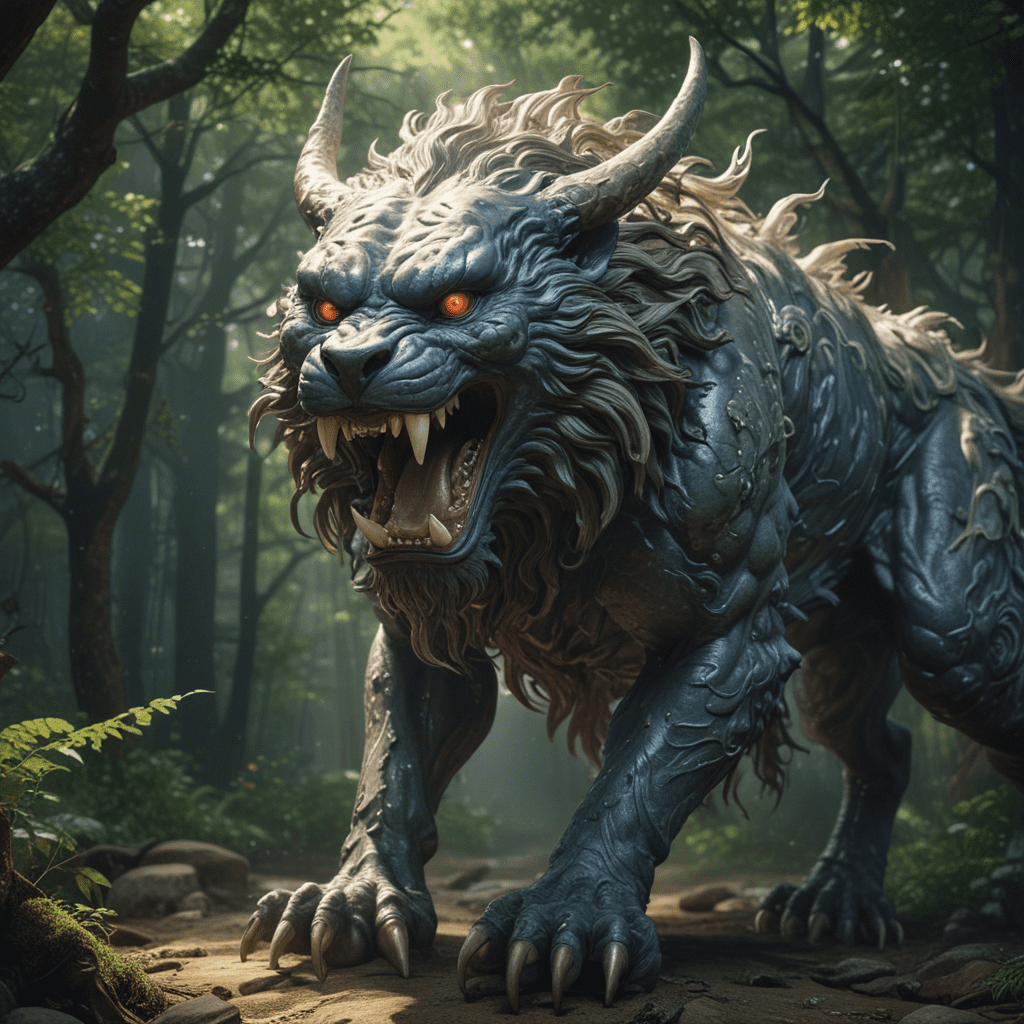The Legend of the Nue: The Supernatural Beast in Japanese Folklore
Introduction
Japanese folklore is brimming with enigmatic and awe-inspiring creatures, and among them stands the Nue, a mysterious and formidable supernatural beast that has captivated the imagination of Japan for centuries. This ethereal entity, with its origins shrouded in ancient myths and legends, embodies the fusion of the natural and supernatural realms, inspiring both fear and fascination. Delving into the enigmatic world of the Nue offers a glimpse into the depths of Japanese folklore, where the lines between reality and fantasy blur, and the supernatural takes on a tangible presence.
Origins and History
The Nue's origins are deeply entwined with ancient Japanese folklore, with tales and legends weaving a tapestry of mystery and intrigue around this creature. The earliest known mention of the Nue appears in the medieval text "Konjaku Monogatarishū," where it is depicted as a manifestation of a vengeful spirit. Over time, the Nue's legend evolved, and it became associated with natural disasters and epidemics, its appearance seen as an ominous harbinger of misfortune. The Nue's enigmatic nature has made it a subject of fascination and speculation, with scholars and folklorists seeking to unravel the secrets of its origins and its enduring presence in Japanese culture.
Physical Appearance
The Nue is often described as a grotesque hybrid creature, its form a bizarre amalgamation of different animals. Its body resembles that of a monkey, with a long, slender tail, while its head is that of a tanuki, a Japanese raccoon dog. The Nue's most striking feature is its elongated neck, reminiscent of a snake's, upon which rests a tiger's head. This unique combination of animalistic traits makes the Nue a truly distinctive and unsettling creature, its appearance evoking a sense of unease and mystery. The image of the Nue has become deeply ingrained in Japanese art and literature, with depictions of this enigmatic beast found in numerous paintings, woodblock prints, and sculptures.
Supernatural Abilities
Beyond its uncanny physical appearance, the Nue possesses a range of supernatural abilities that make it a formidable presence. It is said to have the power of flight, soaring through the night sky with its serpentine neck extended, its eyes glowing with an eerie luminescence. The Nue's cry is described as a haunting and mournful wail, which can strike fear into the hearts of those who hear it. Additionally, the Nue is believed to possess the ability to manipulate the weather, bringing forth storms and causing widespread destruction. The combination of its physical and supernatural attributes makes the Nue a creature of immense power, its presence evoking a sense of awe and trepidation.
VI. Symbolism and Interpretation
The Nue has long been interpreted as a symbol of chaos and misfortune, its grotesque appearance and uncanny abilities seen as harbingers of disaster. Its hybrid nature, a fusion of different animals, suggests a violation of the natural order, further amplifying its association with disruption and upheaval. In some interpretations, the Nue is seen as a manifestation of evil spirits, its presence signaling the presence of malevolent forces. Alternatively, it has been suggested that the Nue represents the hidden dangers lurking within nature, a reminder that even the most familiar surroundings can harbor threats.
VII. Cultural Influences
The Nue has had a profound impact on Japanese culture, influencing art, literature, and theater. It has been depicted in numerous ukiyo-e woodblock prints, its striking form and unsettling presence making it a popular subject for artists. In literature, the Nue appears in both classical and contemporary works, its enigmatic nature providing inspiration for authors and poets alike. Noh theater, a traditional form of Japanese drama, frequently incorporates the Nue as a character, its haunting cry and grotesque appearance adding to the atmosphere of suspense and intrigue.
VIII. Notable Sightings and Encounters
Throughout history, there have been numerous alleged sightings of the Nue, further cementing its place in Japanese folklore. One of the most famous encounters occurred in 1221, when former Emperor Gotoba claimed to have seen the Nue hovering over his palace. The incident caused widespread panic and led to prayers and rituals being performed to appease the vengeful spirit. In more recent times, sightings of the Nue have been reported in various parts of Japan, with some claiming to have heard its eerie cry or witnessed its shadowy form.
IX. Adaptations in Modern Media
In modern times, the Nue has found its way into various forms of popular culture. It has been featured in anime, manga, and video games, its unique appearance and supernatural abilities making it a popular choice for creators. In these adaptations, the Nue is often portrayed as a formidable opponent, its powers and motivations varying depending on the context. The enduring presence of the Nue in modern media speaks to its lasting appeal and the enduring fascination it holds for Japanese audiences.
X. Conclusion: The Enduring Legacy of the Nue##
The Nue stands as a testament to the enduring power of Japanese folklore, its enigmatic presence captivating the imagination for centuries. Its grotesque appearance, supernatural abilities, and symbolic significance have made it a beloved and feared creature in Japanese culture. From its origins in ancient myths to its modern-day adaptations, the Nue continues to inspire and terrify, reminding us of the hidden realms that lie just beyond our perception. Its legacy is one of mystery, wonder, and the enduring power of the supernatural.
FAQ
Q: What is the Nue?
A: The Nue is a supernatural beast in Japanese folklore, depicted as a hybrid creature with a monkey's body, tanuki's head, and tiger's head on an elongated snake-like neck.
Q: What powers does the Nue possess?
A: The Nue is said to have the power of flight, manipulate the weather, and bring forth storms. Its cry is described as a haunting and mournful wail, capable of striking fear into the hearts of those who hear it.
Q: What does the Nue symbolize?
A: The Nue is often interpreted as a symbol of chaos and misfortune, its grotesque appearance and uncanny abilities seen as harbingers of disaster. It has also been suggested that it represents the hidden dangers lurking within nature or the manifestation of evil spirits.
Q: Have there been any alleged sightings of the Nue?
A: Throughout history, there have been numerous alleged sightings of the Nue. One of the most famous occurred in 1221, when former Emperor Gotoba claimed to have seen the Nue hovering over his palace.
Q: How has the Nue influenced Japanese culture?
A: The Nue has had a profound impact on Japanese culture, influencing art, literature, and theater. It has been depicted in numerous ukiyo-e woodblock prints, appears in both classical and contemporary literature, and is frequently incorporated as a character in Noh theater.



